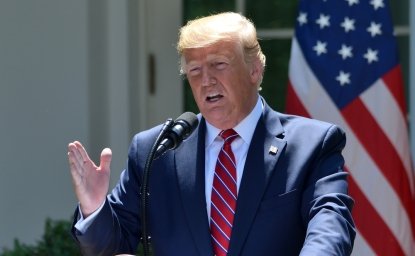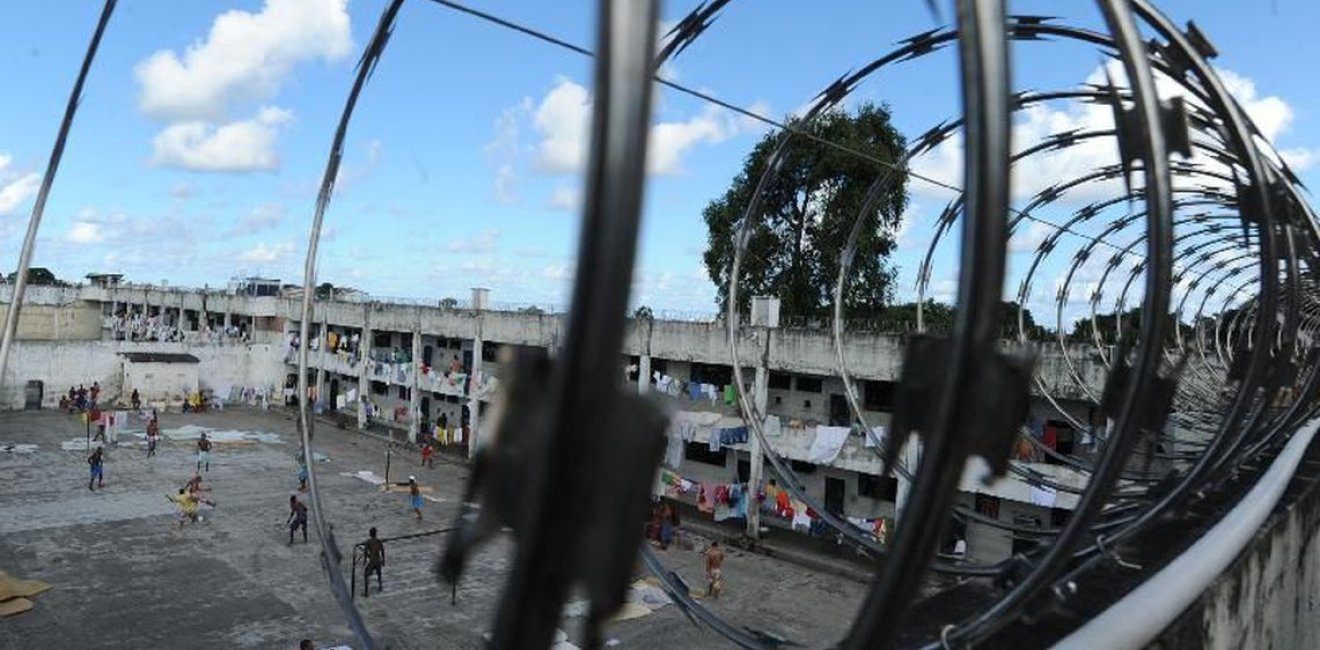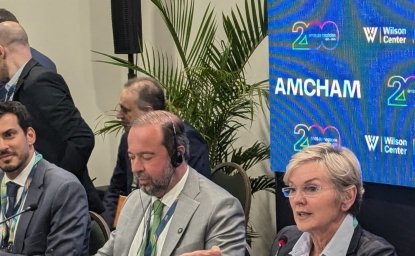
A blog of the Brazil Institute
On July 30, inmates killed nearly sixty fellow prisoners during a five-hour clash between rival gangs in Altamira prison in the northern state of Pará, an event that recalled the deaths of fifty-five inmates from different prisons in Amazonas state in May. Just two years earlier, in 2017, more than 120 inmates died over two days of fighting among rival gang members at prisons across Brazil’s northern states.
Outbreaks of deadly violence are not uncommon in Brazil’s prisons, which have struggled to accommodate the country’s steadily increasing prison population. In fact, the homicide rate for inmates is six times higher than the already-high national average. Yet voters and politicians have tended to view violence within prisons as separate from the public security crisis nationwide. When President Jair Bolsonaro and his Justice and Public Security Minister, Sergio Moro, promised voters that they would be tough on crime, much of their rhetoric focused on harsher penalties and jailing more criminals, rather than true penal system reform. However, the prevailing policy of mass incarceration may only exacerbate the existing violence and poor conditions that plague Brazil’s penitentiary system, while doing little to improve public security nationwide. Years of research and experience suggest policies targeting the inflow of inmates and recidivism—the likelihood of a convicted criminal to reoffend—are far more effective at reducing overall crime rates.
What Does Brazil’s Penitentiary System Look Like?
With over 811,000 inmates, Brazil registers the world’s third largest prison population, behind China (1.6 million) and the United States (2.1 million). Between 2000 and 2015, the United States’ prison population increased by 14 percent, while Brazil’s increased by a whopping 170 percent. Although the United States still incarcerates a larger percentage of its population than any other country in the world, incarceration trends are on a downward path: the country’s incarceration rate (which takes into account population change) peaked at 1,000 inmates per 100,000 adults during 2006 and 2008 and has declined every year thereafter. Experts attribute this to a decreasing crime rate and changes in prosecution and sentencing patterns. In contrast, Brazil’s trend shows that the incarceration rate is still increasing. According to Brazil’s Ministry of Public Security,[1] the country’s prison population will surpass one million in 2021, and reach 1.5 million by 2025. Yet, Brazil has just half of the cell space needed to accommodate its inmates today.
The challenges associated with mass incarceration, however, are not evenly distributed between state and federal prisons. In terms of capacity, federal prisons are only at 52.5 percent capacity, while state prisons are, on average, at 197.4 percent capacity. Northern states, where violent outbreaks have been frequent, are the most crowded—Amazonas is at 483.9 percent capacity, the highest out of any other state. Federal prisons also spend more, on average, per prisoner. The Ministry of Public Security estimates the cost per prisoner in federal penitentiaries to be R$4,800 (or $1,265), and just R$1,800 (or $474) in state facilities. Conditions in federal prisons are thus better rated and they are generally considered more effective in combatting organized crime. However, there are only five federal prisons in Brazil, accounting for a mere 0.1 percent of Brazil’s incarcerated population.
Like in the United States, the majority of incarcerated individuals in Brazil are young males, aged 18 to 29, black or pardo, with minimal or no schooling—89 percent have not completed basic education. It is important to note, however, that women make up the fastest-growing segment of Brazil’s rising prison population: from 2005 to 2014, the rate of women’s incarceration alone increased 10.7 percent annually. The majority of incarcerated individuals, both men and women, were arrested for theft or drug trafficking, while homicide accounts for less than one-fifth of total detainees.
Moreover, almost 40 percent of prisoners in Brazil are pre-trial detainees who have yet to be sentenced, the result of a chronically understaffed public defender system in Brazil and the disinclination of judges to apply alternative sentencing statutes for non-violent crimes, despite the existence of such laws (for example, the Lei das Medidas Cautelares). And in northeastern states like Amazonas, the percentage of inmates in pre-trial detention is above 70 percent. As a result, “many people awaiting trial are routinely held with convicted prisoners, in violation of international standards and Brazilian law,” reports Human Rights Watch.
The country’s overcrowded, underfunded, and understaffed penitentiary system leaves prison authorities inadequately trained and inmates vulnerable to abuse and recruitment by criminal organizations. There are at least 83 criminal organizations operating in prisons in Brazil. Two of the most established are the Rio-based Comando Vermelho (Red Command) and the Primeiro Comando da Capital (First Capital Command) from São Paulo, which operates in all 27 states. In several of Brazil’s prisons, outnumbered guards exert nominal control while gangs run criminal activities from within. The overcrowded and understaffed nature of the prisons makes it difficult to separate faction leaders and competing gangs and to stop the infiltration of small weapons and cellphones. Moreover, prisons become a breeding ground for new recruits, as incoming inmates are forced to affiliate in return for their protection. Thus, mass incarceration not only contributes to recurring prison riots and gang-on-gang violence, but ultimately helps strengthen Brazil’s organized crime groups.
Challenges to Reform Under Bolsonaro’s ‘Tough-on-Crime’ Stance
“É preciso prender e deixar preso” (You have to arrest them and keep them locked up), said President Jair Bolsonaro during his campaign; rhetoric that certainly resonated with Brazilians’ perception and fear of widespread violence. When it comes to prisons, society is especially ambivalent, explains Robert Muggah, research director and co-founder of the Igarapé Institute: “Many Brazilians are numb to violence, especially when it occurs in prisons.” Inmates and criminals are dehumanized and popularly considered “better off dead.” The saying “Bandido bom é bandido morto” (A good criminal is a dead criminal) is a common one. This ambivalence leads to popular support for mass incarceration.
Bolsonaro campaigned on a prison reform proposal to reduce the minimum age of criminal responsibility to 16 or 17 years old, deny suspects the right to bail hearings before a judge, and eliminate jail sentence reductions and temporary release. In February, Justice and Public Security Minister Sergio Moro announced his anti-crime package, which includes proposals to toughen prison sentences and isolate faction leaders in maximum security prisons, though how this proposal will fare in Congress is unknown. Recently, Speaker of the House Rodrigo Maia said the proposal attempts to address several issues, without addressing those which are most urgent, “It needed to be a stronger project. A general reform of the prison system...Moro’s project is one that covers several areas and mixes white collar crime with organized crime.”
Fabiano Bordignon, who heads the National Penitentiary Department (Departamento Penitenciário Nacional, or DEPEN), stated that although Brazil’s public security solution depends on several things, “one of those things is the prison system,” explaining that the country’s 1,500 prisons need an additional 350,000 vacancies to house detainees. Bordignon plans to use a R$1.5 billion ($399 million) federal prison fund to help state governments create 10,000 to 20,000 vacancies in existing prisons per year, which would reduce the deficit to 140,000 by the end of Bolsonaro’s term in 2022. Moreover, the government plans to limit cellphone infiltration, improve the recruitment process for guards, launch an evaluation system to help focus government resources on the worst performing prisons, and dispatch federal police forces to support state prisons when necessary.
While expanding capacity in existing prisons addresses the problem of overcrowding, security experts recommend moving away from a policy of mass incarceration and towards a policy that targets the numbers going into prison instead. For example, by enforcing alternative sentencing statutes, the government could significantly decrease the number of pre-trial detainees. Judges continue to impose pre-trial detention in more than 50 percent of cases, despite the other options available, including applying bail, electronic monitoring, nighttime house arrest, travel bans, or the suspension of economic and public activity.
Reforming drug laws to allow for more proportional sentencing is also likely to lower the incarceration rate, given that 28 percent of inmates are convicted of involvement with drug trafficking and a majority of pre-trial detainees are also being held on drug trafficking charges. Despite some positive changes that came with Brazil’s 2006 Drug Law, the number of people incarcerated for drug trafficking increased by 123 percent from 2007 to 2012. On the one hand, the law decriminalized drug use, eliminating prison sentences for users and permitting alternate sentencing for repeat offenders. On the other hand, the law lacks a clear distinction between drug use and trafficking, allowing judges to exercise discretion to determine whether a suspect is a consumer or a dealer. In practice, this has led to the conviction of many users (including first-time offenders caught with small amounts of drugs) as dealers. Furthermore, in its treatment of drug trafficking, the law is more rigorous and raises the minimum prison sentence from three to five years.
Rehabilitation and recidivism are equally important factors for stemming the flow of inmates. A 2015 IPEA study showed that 24 percent of former prisoners were convicted of another crime within a year of their release. Many inmates who join gangs in prison in exchange for protection end up indebted, causing them to re-engage in drug trafficking and other criminal activities. And few inmates leave prison with educational or work experience that would improve their qualifications for hire; on average, only 12 percent of prisoners in Brazil receive education and 15 percent work.
Nevertheless, there are a few prisons in Brazil that are serving as pilot projects to test rehabilitation policies. One prison in Paraná state, the result of a partnership between the state government and the state court, functions as a semi-open regime, where all inmates are required to study and work. The result is zero recidivism. Another rehabilitation method already implemented in eight states is called APAC (Associação de Proteção e Assistência aos Condenados): incarceration centers run by civil society, where prisoners are responsible for studying, working, cleaning and even their own security, as APACs do not have weapons or guards. According to Brazil’s National Justice Council (CNJ), the recidivism rate of these units is around 10 percent.
On the prevention side, special attention should be given to at-risk youth, who are more likely to join organized crime groups, especially in a scenario of high unemployment, which disproportionately affects young, black or pardo Brazilians who are less skilled and less educated. A study released by the civil society group Observatório de Favelas found that most vulnerable youth in Rio de Janeiro join drug trafficking between the ages of 13 and 15, and cite their main motivation as financial, followed by group belonging and the adrenaline-charged lifestyle. The study also found that most adolescents drop out of school once they begin drug trafficking, which points to the important role public schools could play in prevention. Student retention, vocational training, and public policies aimed at income and work generation are likely to positively affect public security outcomes.
Privatization and a Comprehensive Strategy for Public Security
Until incarceration rates are addressed, prison overcrowding and violence are likely to remain high in Brazil. Overwhelmed Brazilian states are increasingly turning to privatization as a way to improve facilities, living conditions, and employment opportunities. As of June 2019, there are 32 privately-owned prisons in Brazil. In exploring the prospects of privatization, the United States and other countries that have widely adopted this approach can serve as references for what works and what doesn’t. In the United States example, as Brennan Center for Justice Senior Fellow Lauren-Brooke Eisen found, “private prisons have turned out to be neither better nor cheaper,” while Australia and New Zealand’s model of performance-based contracts are proving more successful.
Whether the current administration in Brazil will be successful in curbing crime and decreasing the country’s incarceration rate remains uncertain, but a comprehensive strategy that addresses the penal system will be critical to lasting improvement in public security.
[1] Under the Bolsonaro administration, the Ministry of Public Security merged with the Ministry of Justice. The Justice and Public Security Ministry oversees law and order, judicial policy and public security, and ensures political and constitutional rights are guaranteed.
Image by Marcello Casal Jr. via Agência Brasil
Author

Brazil Institute
The Brazil Institute—the only country-specific policy institution focused on Brazil in Washington—aims to deepen understanding of Brazil’s complex landscape and strengthen relations between Brazilian and US institutions across all sectors. Read more

Explore More in Brazil Builds
Browse Brazil Builds
They're Still Here: Brazil's unfinished reckoning with military impunity




